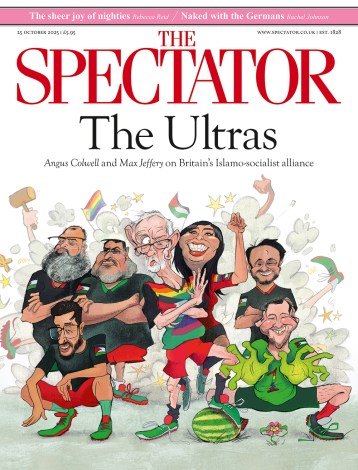When I was about to start a weekend colour supplement for the Independent in 1988, I got a note from the poet James Fenton containing a list of ‘do’s’ and ‘don’ts’ about what to put in it. The one that has stuck in my mind was to include no articles about Tuscany. This was very good advice, but far from easy to act upon.
Those parts of the media concerned with ‘lifestyle’ were then obsessed with Tuscany, having recently invented the ghastly word ‘Chiantishire’ to embrace the idea that the area between Florence and Siena had become a sort of English upper-class preserve. This was strange, because the British were very thin on the ground there. But it was an idea that took such root that the British media could not be deterred from publishing endless articles about it. Tuscany was vying with Provence, about to be celebrated in the best-selling books of Peter Mayle, as the principal dream destination for anyone fed up with life in Britain.
Tuscany, of course, has a great deal to commend it, as the British have known for centuries. Many have always resided in Florence. But the British presence in Chianti was something that started in the 1960s, when discerning Britons of slender means saw an opportunity to snap up farmhouses in idyllic settings and enjoy the kind of pastoral tranquillity that they could not aspire to at home. Such houses were then incredibly cheap. Many hundreds had been left abandoned by peasants migrating to the cities in search of work. There was such poverty in the countryside that, according to Bill Thomson, the chairman of Knight Frank in Italy, there was no lavatory paper on sale in the now rich little town of Radda-in-Chianti until 1964 (they used brown wrapping paper instead). There seemed to be then so little prospect for agriculture in the region that the authorities even seriously considered covering landscapes unchanged since the Renaissance with blankets of pine trees.
Mr Thomson pays great tribute to the British pioneers of the 1960s for sparing Chianti this kind of fate. There were not many of them, but they saved enough Tuscan farmhouses to open the eyes of others to their beauty and charm. So a market gradually developed in which peasant dwellings then worth almost nothing have come to be sold nowadays for two or three million euros each. Mr Thomson waxes lyrical about these early pioneers, who often had no electricity or telephone but gave desperately needed work to the locals and restored their houses without changing or vulgarising them. But most of them have now vanished, and a new generation of owners has taken their place.
Since those early days, the British have become a minority among the foreign residents of rural Tuscany. There are more Germans and other northern Europeans with houses there. But apart from that, the new British are different from the old ones. As Mr Thomson points out, you are not only richer if you pay a couple of million euros for a house; you also have greater expectations than if you have spent only a few hundred pounds on it. So the new owners expect all the comforts of an expensive villa, with broadband, air conditioning, and an access road smooth enough for a low-slung motor car to glide over. They would not be content with the simple life as we used to know it.
So what of ‘Chiantishire’? What, in any case, was it ever supposed to mean? I think it was a combination of things: the idea of an enclave of privileged Britons in an alien territory; the idea of a fashionable summer resort for British socialites; the idea of a safe and convivial place of refuge for important British people, such as prime ministers. The first was never the case, and somehow Tuscany has also become less fashionable. This is not only because Tuscany now attracts mass tourism, like Spain. It’s also because the more glamorous fixtures in the landscape are no more. Sir Harold Acton, for example, is dead, as is Lord Lambton; and there are no other British grandees around of equivalent allure.
David Cameron came to Tuscany last year for his summer holiday, but he is always behind the times (as he has shown with his untimely courtship of the Murdoch empire). Tony Blair gave up coming a while ago, and now Geoffrey Robinson MP, who first hosted him there in the 1990s, has his villa near San Gimignano up for sale. Tuscany is still, of course, a wonderful place to visit, but even the British media seem hardly to mention ‘Chiantishire’ any more. I think we can now safely pronounce it dead.





Comments